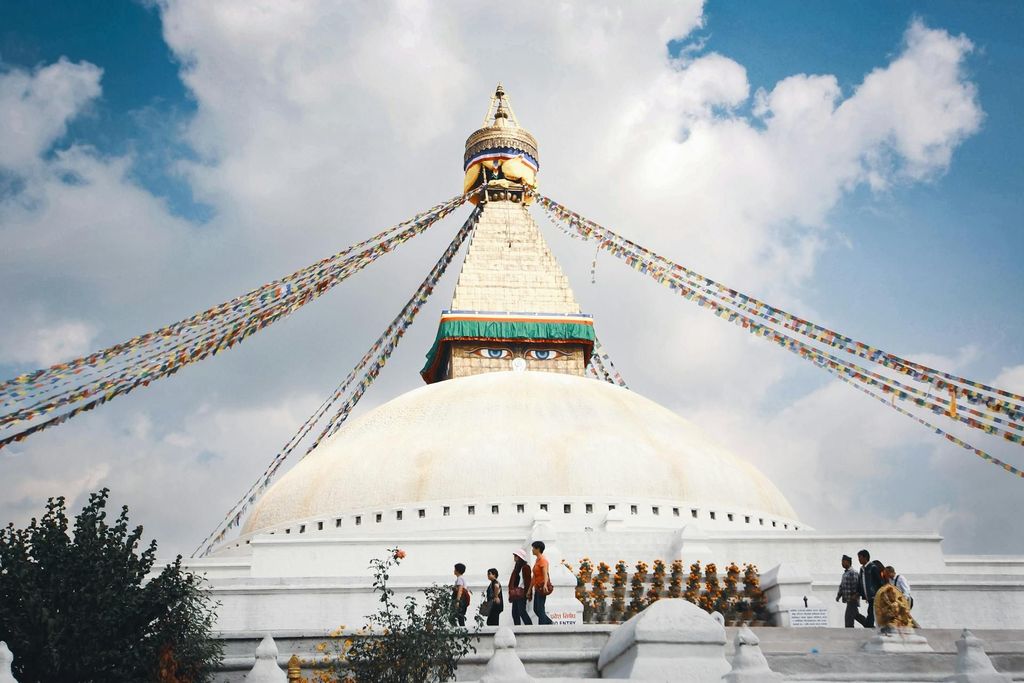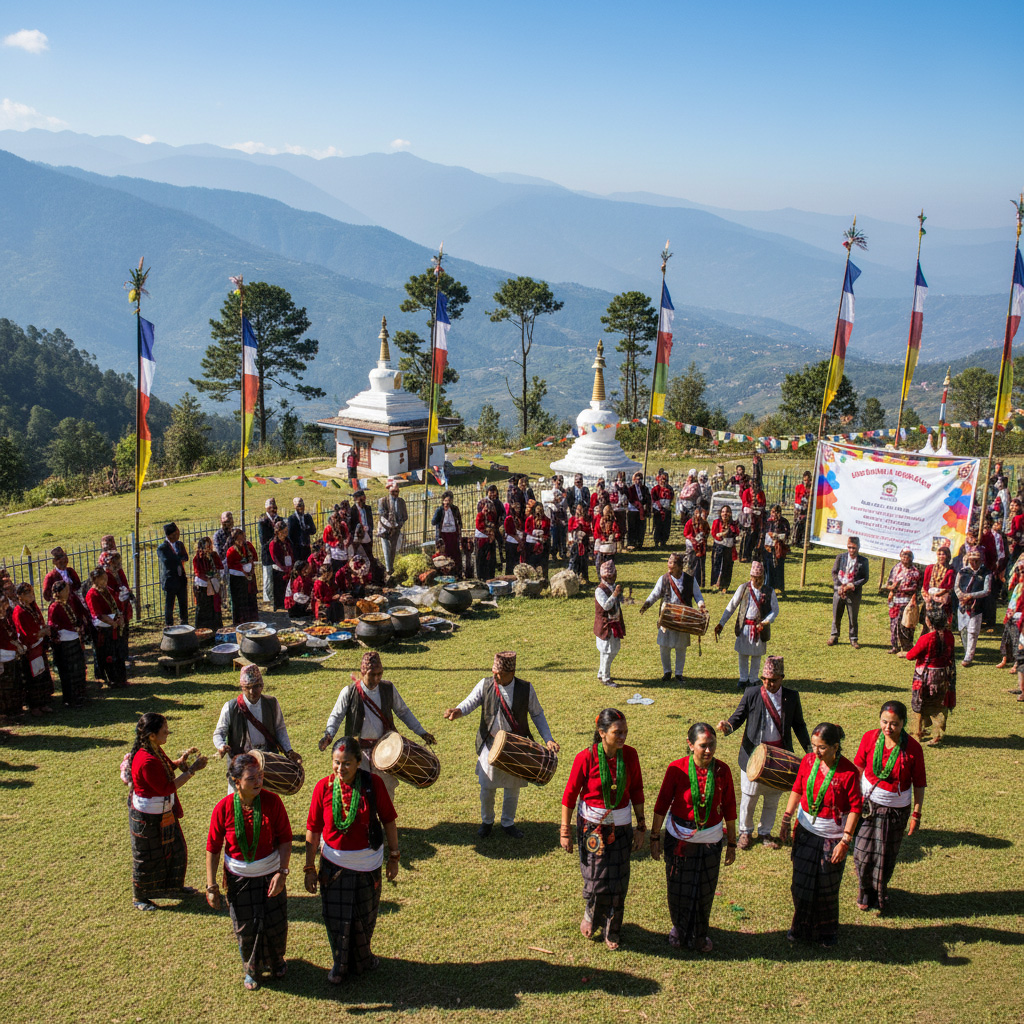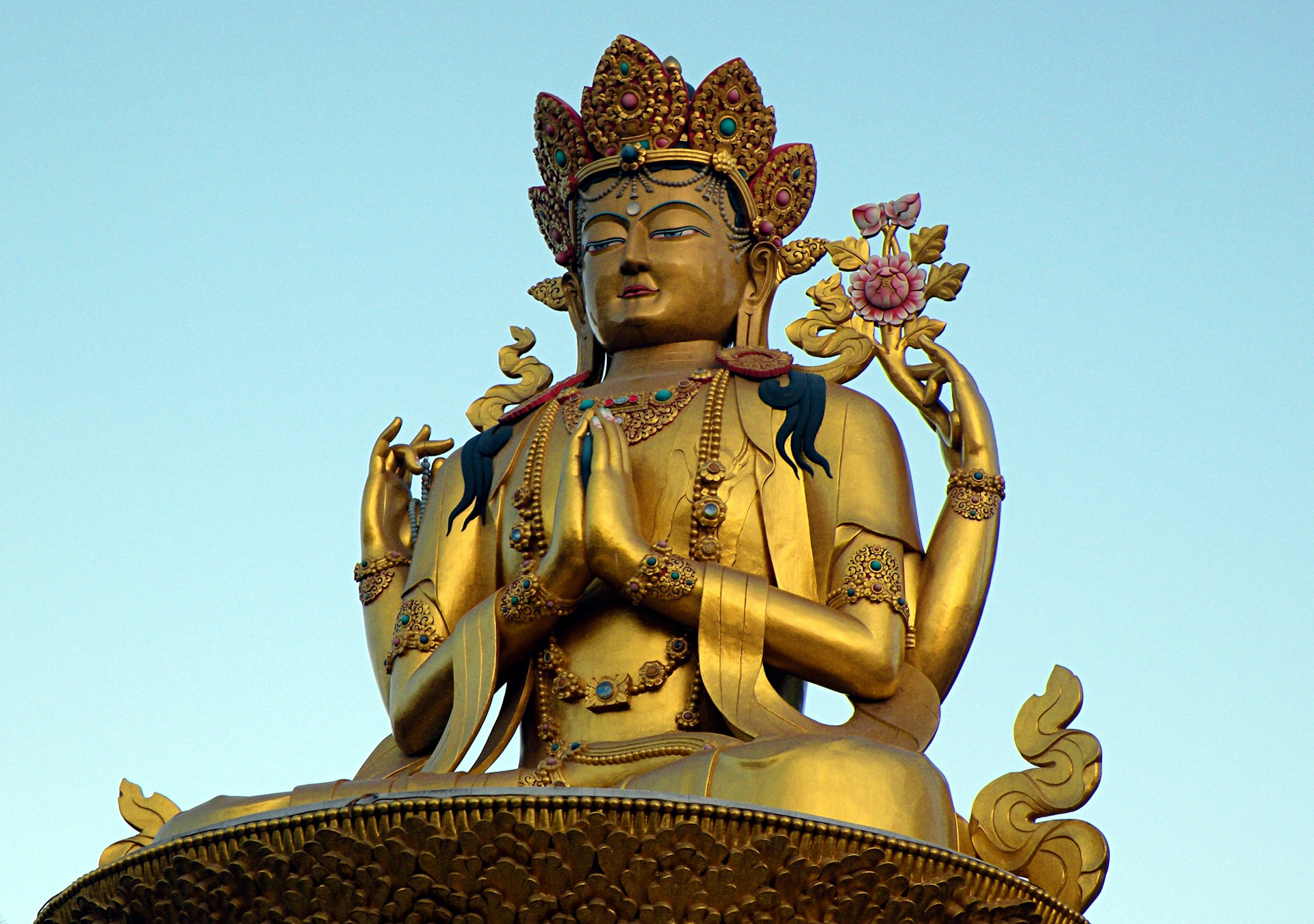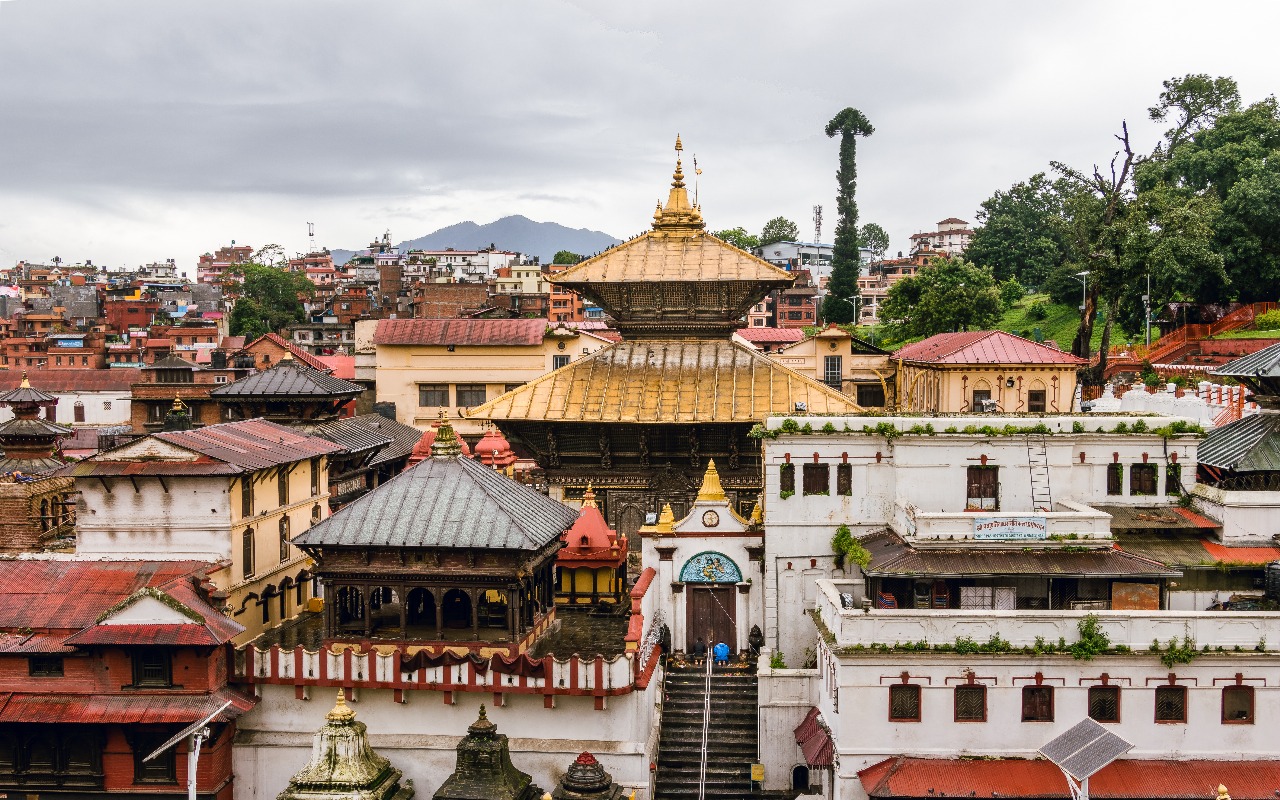Boudhanath Stupa Nepal: Sacred Buddhist Heritage in Kathmandu

The Beating Heart of Buddhist Spirituality in Nepal
Nestled in the northeastern corner of Kathmandu, the Boudhanath Stupa stands as one of the most iconic landmarks of Nepal — a symbol of peace, harmony, and enlightenment. Revered as the holiest Buddhist shrine in Nepal and one of the largest stupas in the world, Boudhanath is not merely a religious monument but a living embodiment of Buddhist devotion and cultural unity.
As one steps into the circular courtyard that surrounds this monumental dome, the rhythmic chanting of mantras, the gentle flutter of colorful prayer flags, and the aroma of butter lamps instantly transport you into a spiritual realm. Locally known as Khasti Chaitya, this sacred site has drawn pilgrims and travelers for centuries — from monks seeking enlightenment to wanderers in search of peace.
In this blog, we’ll explore the history, architecture, cultural importance, festivals, and travel details of the magnificent Boudhanath Stupa Nepal, making it your ultimate guide to one of the most spiritual and photogenic destinations in Kathmandu Valley.
The Origins: Who Built Boudhanath Stupa and Why
The origins of Boudhanath Stupa trace back to the Licchavi period, around the 5th century AD. Historical sources credit King Śivadeva with commissioning its construction, though Buddhist legends offer a more touching and symbolic story.
According to Buddhist lore, a devout woman named Jyajima, along with her four sons, requested the king’s permission to build a stupa to enshrine sacred relics of Lord Buddha. Moved by their devotion, the king granted permission, and together they constructed the stupa as an act of deep faith.
Each of Jyajima’s sons is believed to have gone on to establish different Buddhist schools, spreading Buddha’s teachings across Nepal and Tibet. This legend underscores the universal message of compassion and enlightenment that Boudhanath stands for today.
Over centuries, the stupa became a major center of Tibetan Buddhism — especially after the arrival of Tibetan refugees following the Chinese occupation of Tibet in 1959. Monasteries, known as gompas, began to surround the stupa, creating a vibrant hub of Buddhist learning and prayer.
Today, Boudhanath is not just a religious site; it’s a living heritage, connecting generations of monks, pilgrims, and travelers to the timeless wisdom of the Buddha.
The Historical Significance of Boudhanath Stupa
Historically, Boudhanath served as an essential point along the ancient trade route between Tibet and the Kathmandu Valley. Traders from Tibet would rest, pray, and make offerings at the stupa before continuing their journey across the Himalayas. Over time, it became a spiritual resting point and a cultural meeting ground between Nepalese and Tibetan civilizations.
The stupa witnessed the rise and fall of kingdoms, yet its spiritual flame never dimmed. During the Tibetan influx in the 20th century, the area around Boudhanath transformed into a thriving Tibetan enclave filled with monasteries, prayer halls, and cultural shops.
Today, Boudhanath Stupa is recognized by UNESCO as a World Heritage Site (since 1979) for its architectural, cultural, and spiritual significance. It stands as an enduring testament to Nepal’s role as a cradle of Buddhism and an example of peaceful coexistence among diverse communities.
Architectural Grandeur: The Symbolism of Enlightenment
The architecture of Boudhanath Stupa is one of Nepal’s most remarkable achievements — rich in spiritual symbolism and sacred geometry. Rising to a height of approximately 36 meters, its grand white dome, golden spire, and all-seeing Buddha eyes make it one of the most photographed structures in South Asia.
The Dome and Mandala Base
The massive whitewashed dome represents the vastness of the world and purity of the mind. Beneath it lies a mandala-shaped base, symbolizing the universe in perfect harmony. The entire structure follows ancient Buddhist cosmology, representing the five elements —
- Earth (the base)
- Water (the dome)
- Fire (the spire)
- Air (the umbrella)
- Ether (the pinnacle)
This cosmic symbolism mirrors the path to enlightenment — beginning from the material plane and rising toward spiritual liberation.
The Golden Spire
Atop the dome stands a thirteen-tiered golden spire, representing the thirteen stages of enlightenment that a person must ascend to achieve Nirvana. Each tier is adorned with intricate carvings and precious ornaments that shimmer under the Kathmandu sun.
The Eyes of the Buddha
Perhaps the most striking feature of Boudhanath Stupa is the pair of all-seeing eyes painted on each of the four cardinal directions. Known as the Eyes of Wisdom, they symbolize Buddha’s omnipresence and compassion for all beings. Between them lies a curious spiral mark resembling a question mark — this is the Nepali numeral “1”, representing unity and the single path to enlightenment.
Above the eyes is a small third eye, symbolizing Buddha’s insight and spiritual vision — the power to see beyond the material world.
Prayer Wheels and Flags
Encircling the stupa are 108 prayer wheels, each inscribed with the sacred mantra “Om Mani Padme Hum.” Devotees walk clockwise around the stupa — a ritual known as kora — spinning these wheels to accumulate good karma and spread positive energy.
Overhead, colorful prayer flags flutter in the wind, carrying blessings of compassion, peace, and wisdom across the valley. Each flag represents one of the five elements, reminding all who visit of the delicate balance of life.
Cultural and Religious Significance
For centuries, Boudhanath Stupa has been more than a monument — it’s a living center of Buddhism and a hub of daily spiritual life. Every dawn, monks, devotees, and tourists join the kora, walking clockwise around the stupa while chanting mantras and spinning prayer wheels.
For Tibetan Buddhists, Boudhanath is considered as sacred as Jokhang Temple in Lhasa, making it one of the holiest pilgrimage destinations outside Tibet. The stupa represents the path to enlightenment and is said to radiate compassion to all who come near it.
Around the stupa, you’ll find over 50 monasteries (gompas) where monks study Buddhist philosophy, chant prayers, and perform rituals. These monasteries also serve as cultural centers that preserve Tibetan art forms like thangka painting, mandala creation, and Buddhist chanting.
The surrounding square has a unique energy — filled with local Tharu and Tibetan vendors selling incense, butter lamps, prayer beads, and spiritual artifacts. The mix of religious devotion and local commerce makes Boudhanath a living ecosystem where spirituality and everyday life blend seamlessly.
The Eyes of Buddha: A Symbol of Awareness and Compassion
The Eyes of the Buddha are not merely artistic decorations but profound symbols of Buddhist philosophy. They remind devotees that Buddha is always watching — not in judgment, but in understanding and compassion.
Between the eyes lies the symbolic number “1”, signifying unity — one truth, one way, one path to enlightenment. The third eye above represents inner wisdom — the ability to see beyond illusion and perceive the ultimate truth.
Standing before these eyes, many visitors describe a spiritual awakening — a feeling of being seen, accepted, and guided. Photographers and artists around the world consider these eyes an icon of Buddhist art, representing mindfulness and serenity.
Festivals and Events at Boudhanath Stupa
Boudhanath is alive with festivals that attract thousands of devotees and tourists each year. These festivals are not only visually spectacular but deeply spiritual, showcasing Nepal’s cultural richness and unity.
Lhosar (Tibetan New Year)

The most important celebration at Boudhanath is Lhosar, the Tibetan New Year, held between February and March. The stupa and surrounding area explode in color, music, and ritual. Monks perform masked dances, devotees light thousands of butter lamps, and the air fills with the sound of long Tibetan horns.
Buddha Jayanti

Celebrated on the full moon of April or May, Buddha Jayanti marks the birth, enlightenment, and death of Lord Buddha. On this day, the stupa glows with lights, and thousands of pilgrims offer flowers, lamps, and prayers. Monks conduct special ceremonies and recite sutras for world peace.
Gunla Month
Among the Newar Buddhists, the Gunla festival (usually in August) is celebrated with morning processions, music, and offerings. Pilgrims walk around the stupa carrying images of Buddha and chanting hymns. This month is considered sacred and a time of reflection and devotion.
These festivals make Boudhanath a dynamic living monument — where faith, art, and community come together to celebrate the Buddhist way of life.
The 2015 Earthquake and Restoration: A Tale of Resilience
The 2015 Nepal earthquake caused significant damage to Boudhanath Stupa, particularly to its golden spire. For many, this tragedy symbolized the deep loss Nepal suffered during the disaster. But what followed was a remarkable story of faith, unity, and community effort.
Instead of waiting for international help, local monks, artisans, and residents raised funds and began restoration using traditional methods and sacred texts. The reconstruction respected ancient architectural principles while strengthening the structure with modern techniques.
After 18 months of relentless work, the restored stupa was re-consecrated in November 2016, glowing brighter than ever — a symbol of Nepal’s unshakable spirit and devotion.
Today, the renewed Boudhanath Stupa stands not only as a religious monument but also as a testament to human resilience and collective faith.
How to Visit Boudhanath Stupa
Location and Access
Boudhanath Stupa is located about 7 kilometers northeast of central Kathmandu, making it easily accessible from Thamel, Pashupatinath, or Tribhuvan International Airport.
- By Taxi: Costs between NPR 1000–1800 depending on distance and traffic.
- By Public Bus: Local microbuses and tempos cost less than NPR 100 — an affordable way for budget travelers.
Entry Fees
- Foreigners: NPR 400
- SAARC Nationals: NPR 100
- Nepalese Citizens: Free
Best Time to Visit
The best time to visit is early morning or at sunset. Morning offers calm surroundings perfect for meditation and photography, while evening lights and butter lamps create a magical atmosphere.
To witness its full grandeur, visit during autumn (September–November) or spring (March–May) when weather conditions are perfect for sightseeing and festivals.
Things to Do at Boudhanath Stupa
- Walk the Kora: Join pilgrims in a clockwise circumambulation of the stupa to experience inner calm.
- Spin the Prayer Wheels: Touch and spin each wheel as you walk — a symbolic act of spreading blessings.
- Visit Monasteries: Explore nearby monasteries like Shechen Monastery and Kopan Monastery.
- Enjoy Rooftop Views: Relax in a café with a cup of Tibetan butter tea while watching the stupa shimmer.
- Shop for Handicrafts: Buy Thanka paintings, prayer flags, or singing bowls as souvenirs.
- Join a Meditation Session: Many monasteries offer short meditation or teaching programs for visitors.
Where to Stay and Eat Near Boudhanath
The area around Boudhanath offers a wide range of accommodation — from luxury hotels to budget guesthouses and monastic stays.
Popular Hotels
- Hyatt Regency Kathmandu – a 5-star resort with panoramic views of the stupa.
- Hotel Tibet International – elegant Tibetan-themed accommodation.
- Shambaling Boutique Hotel – serene and highly rated for its comfort and proximity to the stupa.
Cafes and Restaurants
Around the stupa, cozy cafes like La Casita, Flavors Café, and Himalayan Java Coffee offer perfect spots for tea, coffee, and traditional Tibetan dishes. Don’t miss local delicacies like momos, thukpa, and butter tea, which complete the authentic experience.
Nearby Attractions
- Pashupatinath Temple (2 km): One of Hinduism’s holiest temples, perfect for a combined day tour.

- Kopan Monastery (3 km): A peaceful retreat known for meditation courses and spiritual teachings.
- Gokarna Forest: Ideal for nature walks and quiet reflection outside the bustling city.
- Thamel:The tourist heart of Kathmandu, filled with hotels, restaurants, and shopping areas — about 25 minutes’ drive from Boudha.
- Garden of Dreams & Kathmandu Durbar Square:Perfect for those who want to explore more of Kathmandu’s architectural beauty and historical sites.
These nearby destinations allow travelers to explore both the Buddhist and Hindu heritage of Kathmandu in a single day.
Why Boudhanath Stupa is a Must-Visit in Nepal
Boudhanath Stupa is more than a structure — it’s a living spiritual experience. Its timeless beauty, serene energy, and welcoming atmosphere make it one of the most rewarding places to visit in Nepal.
Whether you’re a pilgrim seeking peace, a traveler exploring culture, or a photographer capturing heritage, Boudhanath offers a space for introspection, inspiration, and connection.
The stupa’s enduring message is clear:
“Peace begins from within, and compassion is the path to enlightenment.”
Practical Travel Tips
- Getting There:
Taxi from Thamel takes about 20–25 minutes (approx. NPR 500). Local buses from Ratna Park or Chabahil also operate frequently. - Timing:
Open from sunrise to sunset. Early morning koras are especially peaceful. - Accommodation:
Many guesthouses and boutique hotels are available near Boudha — Shambaling Hotel, The Tibet International Hotel, and Bodhi Boutique Hotel are popular options. - Food & Drinks:
Try local Tibetan dishes like momo (dumplings), thukpa (noodle soup), and butter tea in nearby cafés.
Conclusion: The Soul of Kathmandu
For centuries, the Boudhanath Stupa has stood as a beacon of light, guiding millions toward peace and spiritual awakening. From its ancient origins and symbolic architecture to its vibrant rituals and post-earthquake revival, it embodies the heart and soul of Nepalese Buddhism.
Standing beneath the compassionate eyes of Buddha, one feels an unspoken message — that wisdom, kindness, and awareness are the true treasures of humanity. Visiting Boudhanath is not merely a sightseeing trip; it’s an inner journey, one that lingers long after you’ve left Kathmandu.
“Plan your next spiritual journey to Boudhanath Stupa with Trekking Advisor and experience the peace and beauty of Kathmandu’s Buddhist heritage.”
FAQs about Boudhanath Stupa Nepal
Q1. Why is Boudhanath Stupa famous?
Boudhanath is famous as one of the largest stupas in the world and the spiritual center of Tibetan Buddhism in Nepal.
Q2. What is the meaning of the eyes on Boudhanath Stupa?
They symbolize Buddha’s all-seeing wisdom and compassion, representing awareness of all living beings.
Q3. Can tourists enter the stupa?
The stupa itself is not open for entry, but visitors can walk around, visit monasteries, and enjoy rooftop views.
Q4. How old is Boudhanath Stupa?
It dates back to the 5th century AD, making it over 1,500 years old.
Q5. What is the best time to visit Boudhanath?
Early morning or sunset offers a peaceful experience and great photography lighting.
Recent Articles

Best trek during Dashain and Tihar 2025
Sep 23, 2025




